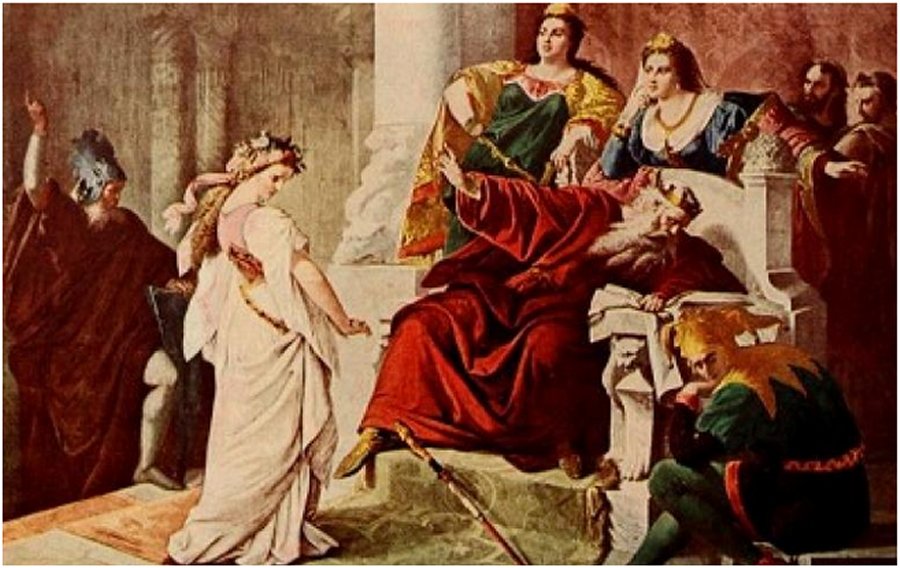MessageToEagle.com – On December 26, 1606, William Shakespeare performed his play ‘King Lear’ before the court of King James I at Whitehall.
In 1605, an anonymous play was published with the name, The True Chronicle History of the life and death of King Leir and his three daughters. This play had been performed as long ago as 1594, but some scholars believe that Shakespeare’s close knowledge of it must have derived from the study of it on the printed page.

However, it is generally agreed that Shakespeare wrote his version of the story sometime in 1605 to 1606. This places the play just after the writing of Timon of Athens and before that of Macbeth and Antony and Cleopatra. King Lear was first printed in 1608.
Shakespeare’s seventeenth-century audience would have been familiar with the story of King Lear through a combination of myth, legend and history.
Shakespeare’s earliest plays, including The Comedy of Errors and The Taming of the Shrew, were written in the early 1590s. Later in the decade, he wrote Romeo and Juliet (1594-1595) and comedies, including The Merchant of Venice (1596-1597).
His most famous tragedies were written after 1600, and these includeinclude Hamlet (1600-01), Othello (1604-05), King Lear (1605-06), and Macbeth (1605-1606).
He became a member of the popular theater group the Lord Chamberlain’s Men, who later became the King’s Men. The group built and operated the famous Globe Theater in 1599.
Shakespeare finally became a major shareholder in the troupe and earned enough money to buy a large house in Stratford in 1597.
He retired to Stratford in 1610, where he wrote his last plays, including The Tempest (1611) and The Winter’s Tale (1610-11). Meanwhile, he had written more than 100 sonnets, which were published in 1609. Shakespeare’s plays were not published during his lifetime.
After his death, two members of his troupe collected copies of his plays and printed what is now called the First Folio (1623).
MessageToEagle.com
Expand for references





